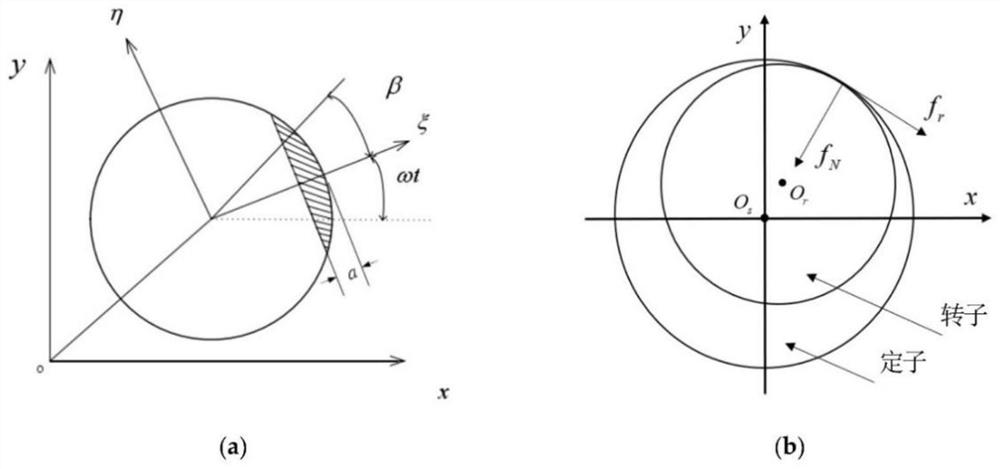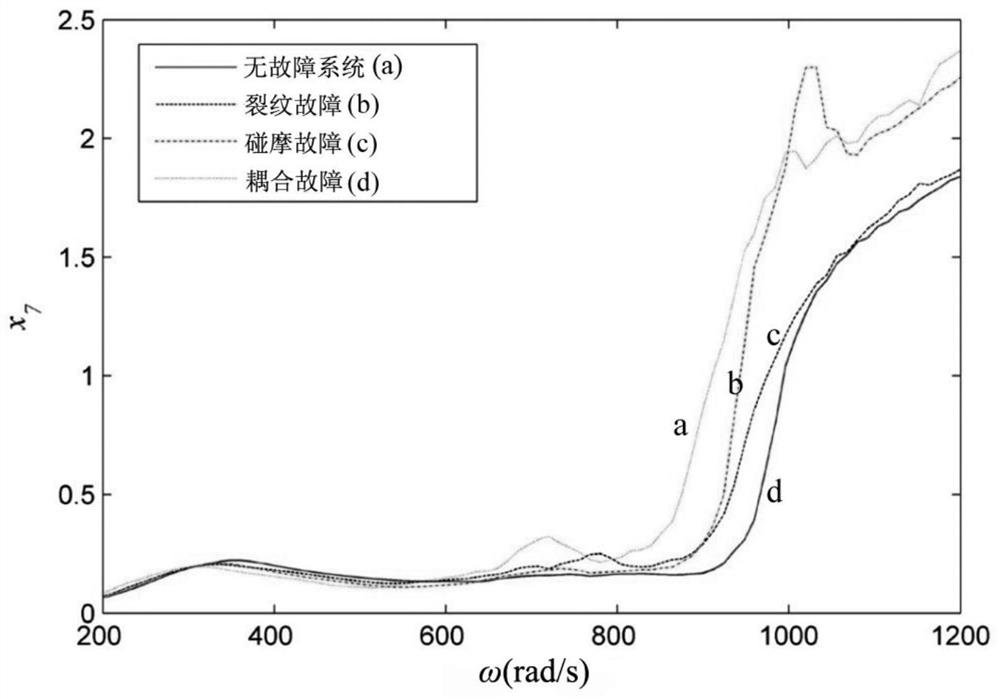Transient intrinsic orthogonal decomposition method applied to coupled fault rotor-bearing system
An intrinsic orthogonal decomposition, coupled fault technology, applied in special data processing applications, instruments, geometric CAD, etc., can solve problems such as disasters, rotating machinery damage, difficult nonlinear dynamic characteristics analysis, etc.
- Summary
- Abstract
- Description
- Claims
- Application Information
AI Technical Summary
Problems solved by technology
Method used
Image
Examples
specific Embodiment
[0117] 1. Analysis of dynamic characteristics of coupling fault rotor-bearing system
[0118] By comparing the coupled fault with a single fault (crack or rubbing), the nonlinear dynamic characteristics of the rotor with coupled fault are studied, and then the influence of system parameters on the coupled fault is discussed. Here the initial value is defined as:
[0119] z i = 0 (i = 1, 2, . . . , 24),
[0120]
[0121] Its overall step is π / 256.
[0122] image 3 Amplitude-frequency curves are shown for rotor systems with different speeds: fault-free system, crack fault, rubbing fault and coupling fault. 1 / 2 harmonic vibration occurs in the crack fault system and the coupling system, the frequency is 2ω c , where ω c is the natural frequency. The amplitude of the coupled system is significantly higher than that of the system with only crack faults, indicating that the rubbing will increase the response amplitude of the crack. The rubbing system is at 1000rad / s(3ω ...
PUM
 Login to View More
Login to View More Abstract
Description
Claims
Application Information
 Login to View More
Login to View More - R&D
- Intellectual Property
- Life Sciences
- Materials
- Tech Scout
- Unparalleled Data Quality
- Higher Quality Content
- 60% Fewer Hallucinations
Browse by: Latest US Patents, China's latest patents, Technical Efficacy Thesaurus, Application Domain, Technology Topic, Popular Technical Reports.
© 2025 PatSnap. All rights reserved.Legal|Privacy policy|Modern Slavery Act Transparency Statement|Sitemap|About US| Contact US: help@patsnap.com



